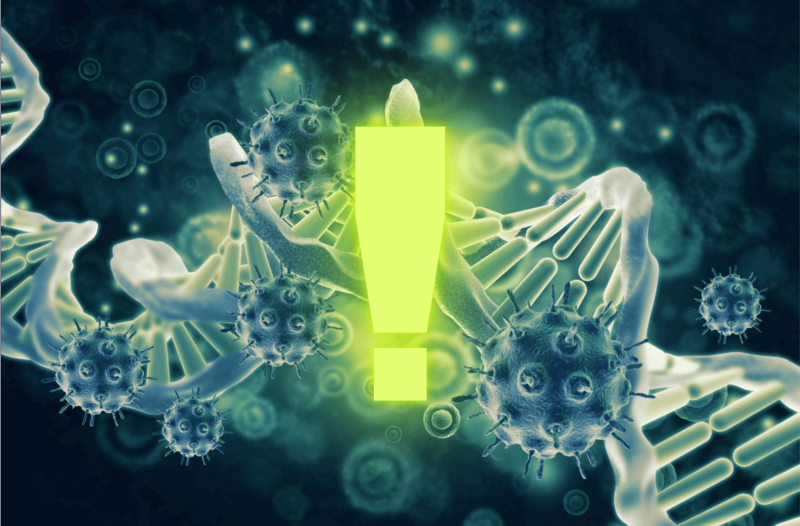The Cape Cod cluster
On Tuesday, July 27, CDC director Rochelle Walensky updated the media on new guidance recommending that everyone, including the fully vaccinated, wear masks in indoor public settings in areas of substantial and high transmission.
“The delta variant is showing every day its willingness to outsmart us and be an opportunist in areas where we’ve not shown a fortified defense against it. In recent days new data on outbreaks show the delta variant behaves differently than past strains. In rare occurrences, some vaccinated people are infectious after vaccination and may be contagious. This new science is worrisome and unfortunately warrants an update to the recommendations,” Walensky explained. (I forgive her anthropomorphizing because she uses “data” as a plural.)

News media quickly zeroed in on Cape Cod as the site of the outbreak that prompted the change, and by Friday July 30, CDC’s weekly publication the MMWR provided the details:
In July 2021, following multiple large public events in a Barnstable County, Massachusetts, town, 469 COVID-19 cases were identified among Massachusetts residents who had traveled to the town during July 3–17; 346 (74%) occurred in fully vaccinated persons. Testing identified the Delta variant in 90% of specimens from 133 patients.
Viral loads among the vaccinated were similar to those among the unvaccinated.
While the media and public were focusing on the breakthrough cases on Cape Cod – which quickly doubled in number – a troubling paper appeared in the Nature journal Scientific Reports July 30, from Fyodor Kondrashov and colleagues at the Institute of Science and Technology in Austria. Their modeling showed, to their surprise, that the current state of vaccination in the US – hovering near 60%, far below herd immunity – opens a window for natural selection to favor mutations that “escape” vaccine protection. Their paper concludes that this is “inevitable.”

The juxtaposition of widespread vaccine hesitancy in the US and a changeling virus that is becoming ever-more-virulent prompted William Haseltine, a former Harvard Medical School professor who is a superhero of developing treatments for HIV/AIDS and of the human genome sequencing effort, to say:
Having half the population vaccinated and half unvaccinated and unprotected — that is the exact experiment I would design if I were a devil and trying to design a vaccine-busting virus.
Escape mutations predicted and already suspected
What is disturbing, if not terrifying, is natural selection favoring “escape” mutations that our immune systems, literally, cannot see, even when primed with vaccines. I raised this possibility here at DNA Science May 27:
Viral variants will continue to arise because mutation and natural selection are the forces of evolutionary change; they’re part of nature. And that’s a powerful reason for universal vaccination – to prevent the viral replication that spawns new mutants that then collect into variants that benefit the enemy.
The vaccines protect against the variants that have emerged so far. But could mutations that they don’t cover, perhaps in genes other than the one encoding the spike protein, arise and persist among the ever-shrinking pockets of unvaccinated individuals? Algorithms predict not, but as we’ve learned with this virus like no other, our predictions don’t always hold. The virus continues to surprise us.
Algorithms now DO predict that escape mutations are likely, perhaps even already here. First may be the lambda variant detected in Peru about a year ago. WHO declared it a “variant of concern” June 4, 2021, when it was in 20 countries. A study (still a preprint) from researchers in Chile found that in addition to increased infectivity, lambda (aka C.37) was less able to induce neutralizing antibodies from the CoronaVac vaccine than previous variants.

A window of vulnerability if we don’t reach herd immunity
In the recent Scientific Reports paper, evolutionary biologists simulated the chance that a vaccine-resistant viral strain emerges in a population of ten million people over three years, with vaccinations beginning the first year. The model considered rates of infection, recovery, death, vaccination, and viral mutation, and percent of people with resistant strains. It provided eight scenarios and simulated waves of low and high transmission to emulate the effects of large-scale interventions like lockdowns.
Explained lead author Simon Rella at a news conference:
Vaccines are our best bet to beat this pandemic. A concern is the possibility that a coronavirus strain evolves that circumvents protection from the vaccines. We modified a classical model in epidemiology to study the dynamics of rare mutations in the virus in the pandemic.
The strategy identified three key factors that increase the probability that a vaccine-resistant strain will emerge:
- Slow rates of vaccination
- High number of infected individuals
- Faster rate of mutation
These factors, Rella said, are obvious. ““Every infected individual is like a mini-bioreactor, increasing the risk that mutations will appear that will endow the virus with the property of avoiding the immune system primed by a vaccine.”
But the model also revealed something not as obvious, Rella continued.
When most people are vaccinated, a vaccine resistant strain has an advantage over the original strain and spreads through a population faster than the origin strain. The concern is that our model shows if by the time a vaccine campaign is close to finishing and non-pharmaceutical interventions – such as masking and social distancing – are not maintained, there’s a chance vaccine-resistant mutations will go through the roof, through populations.
But the converse is true too. “Our model shows that if at the time a vaccine campaign is close to finishing and non-pharmacological interventions are maintained, then there’s a chance to completely remove the vaccine-resistant mutations from the virus population,” Rella said.
The simulation revealed that resistance appears when about 60% of a population has been vaccinated. That looming threshold, plus the fact that 90% of the vaccinated people in the Cape Cod outbreak had virus, are powerful reasons why returning to “non-pharmaceutical interventions” – the public health measures that became part of daily life – should return.
Kondrashov explained the evolutionary dynamics behind the prediction that resistance can arise when more than half the population has been vaccinated, but herd immunity has not yet been reached. “In the situation where two viruses (vaccine-sensitive and vaccine-resistant) are competing for hosts, once a lot of people are vaccinated, the original strain can no longer compete against a virally-resistant strain for infecting hosts. This is a particular worry, the potential for selection of viral-resistant strains.” And how strong that selective pressure is depends on the strength of resistance of the particular variant. Kondrashov adds that slight loss of efficacy for some vaccines over time is another cause for concern.
And so a perfect storm may be brewing – favoring the virus. But there’s a way out: reaching herd immunity, as the experts have been shouting for many months.
“We hope for the best, that vaccine resistance has not developed, but caution that evolution is a very powerful force and maintaining some precautions during vaccination may help to control that evolution,” said Kondrashov. But he’s pessimistic, because of worldwide vaccine access. It is maddening to many of us that here in the US, millions are still refusing to be vaccinated when billions elsewhere desperately want it. “The point of our paper is that we want to reduce the chances of (vaccine-resistant strains) happening, and the way to do this is continued vaccination as rapidly and globally as we can,” said Kondrashov.
To paraphrase from Star Trek, let’s hope that the virus evolving vaccine resistance is, from its point of view, futile. And that can only happen if more than 80 percent of us, according to the latest calculations for herd immunity, are vaccinated.
DO IT NOW! Anyone still unvaccinated need look no farther than the statistics pouring out of the hospitals: the sick and dying are almost exclusively unvaccinated, and even deathbed regrets cannot budge some people trapped in their bubbles of fear and suspicion of science, medicine, the media, and the government. Misinformation can’t distort these obvious facts, nor does one need a science background to understand what’s happening. It’s simple: don’t die if you don’t have to – especially if vaccine refusal can harm another person.
Ricki Lewis has a PhD in genetics and is a science writer and author of several human genetics books. She is an adjunct professor for the Alden March Bioethics Institute at Albany Medical College. Follow her at her website or Twitter @rickilewis
A version of this article was originally posted at PLOS and has been reposted here with permission. PLOS can be found on Twitter @PLOS































